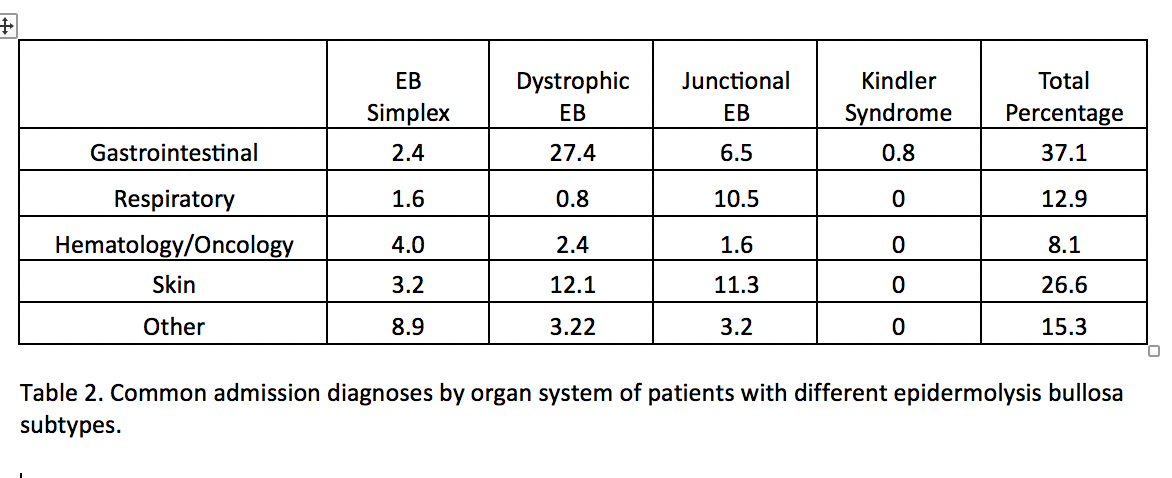Hospital Medicine
Session: Hospital Medicine 2
314 - Acute Hospitalization Patterns of Epidermolysis Bullosa Patients at a Children's Hospital
Friday, May 3, 2024
5:15 PM - 7:15 PM ET
Poster Number: 314
Publication Number: 314.394
Publication Number: 314.394

Afnan Albahri, MD (she/her/hers)
Pediatric Hospitalist
Childrens Hospital of Philadelphia
Wilmington, Delaware, United States
Presenting Author(s)
Background: Epidermolysis Bullosa (EB) is a rare genetic blistering skin disorder that carries a high risk of patient morbidity and mortality. A spectrum of EB phenotypes exist with varying degrees of severity, but little is known about their healthcare utilization patterns. This limits opportunities for safety and improvement in the inpatient setting.
Objective: To characterize and compare acute hospitalization patterns of EB patients at our free-standing children’s hospital.
Design/Methods: In this retrospective descriptive study, we performed queries of an institutional data warehouse using a set of EB-specific ICD10 codes to identify inpatient and ambulatory encounters associated with an EB diagnosis between Jan 2013 and May 2023. Chart review was then used to ensure all patients included in the final dataset had a confirmed diagnosis of EB. Patients with suspected EB diagnoses that were later diagnosed with other blistering disorders were excluded. We then narrowed the dataset to patients with EB with ≥1 acute hospitalizations during the time interval. We used electronic health record data to identify initial admission location (to a medical/surgical unit or intensive care unit) , primary admission diagnoses, and length of stay (LOS) for each inpatient encounter. We compared EB subtypes as follows: Fisher's exact test was used for unit location of admission and Kruskal Wallis testing was used for LOS data.
Results: From Jan 2013-May 2023, a total of 179 patients with a confirmed EB diagnosis were seen in care at our institution, both in the inpatient and ambulatory settings. Of these, 52 (29%) patients had ≥1 acute hospitalizations, with a majority of admissions to a medical/surgical ward (Table 1). There was no statistically significant difference in admission location across EB subtypes. The average LOS for all patients was ~18 days, with no statistically significant differences in LOS across EB subtypes. (Table 1) The most common admission diagnoses were for gastrointestinal and skin-specific diagnoses. (Table 2)
Conclusion(s): Reasons for acute hospitalization of EB patients may vary but GI and skin-related issues may be common. We found no significant differences in admission location or LOS across EB subtypes. Future study will seek to explore potential risk factors for acute hospitalization.

.png)
